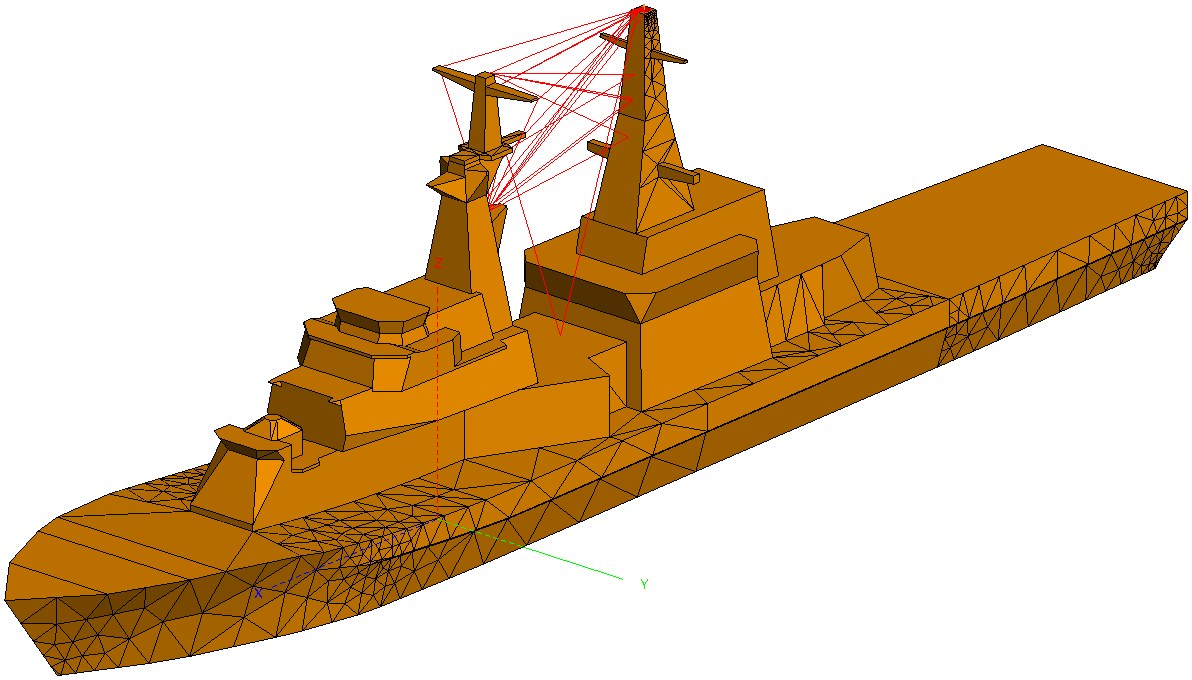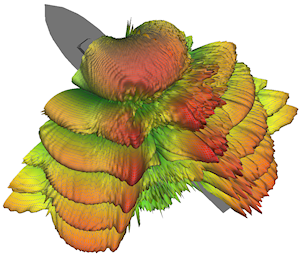Uniform Theory of Diffraction (UTD)
The uniform theory of diffraction (UTD) is formulated for modelling electrically extremely large structures. The UTD is an asymptotic high-frequency numerical method similar to the PO.
Users typically attempt a solution with the MoM, and when they realise that the structure is electrically too large to solve with their available resources (platform memory and time), they turn to the MLFMM. If the required resources are still too large, the PO, UTD or ray launching geometrical optics (RL-GO) can be used.
- Uniform theory of diffraction (UTD) with polygons and cylinders
-
Feko hybridises the current-based accurate MoM with the UTD. Bidirectional coupling between the MoM and UTD is maintained in the solution (through modification of the interaction matrix) to ensure accuracy. Frequency does not affect the memory resources required for solving a structure with UTD, given that only points of reflection from surfaces and diffraction from edges or corners are considered without meshing the structure.

Figure 1. UTD modelling of cross-coupling on the superstructure of a modern naval vessel.Multiple reflections, edge and corner diffraction, double diffraction and creeping waves is taken into account. Insight into the propagation of rays are provided in POSTFEKO during post-processing. Currently, the numerical formulation of the UTD only allows it to be applied to flat polygonal plates with minimum edge lengths in the order of a wavelength, where surface curvature is not considered. A single canonical circular cylinder can be included in the model. Creeping waves are only considered on the cylinder. The UTD is well suited to the analysis of ships at radar frequencies but less appropriate for analysing complex objects with curved surfaces (such as automobiles).
Figure 2. Analysis of the transmission patterns of an X-band radar mounted on a ship. - Faceted uniform theory of diffraction (faceted UTD)
-
The faceted-UTD solver can be used to calculate fields and radiation patterns for antenna placement applications at high frequencies. It supports impressed sources and a planar triangular PEC surface mesh. The resource requirements are independent of frequency, but depend on the number of mesh elements required to accurately represent the geometry and the number of field observation points. Multiple reflections, diffraction and creeping wave effects on curved surfaces are considered.
The faceted UTD does not support hybridization with MoM. It is well suited for antenna placement on electrically large platforms with planar or curved surfaces (such as aircrafts).